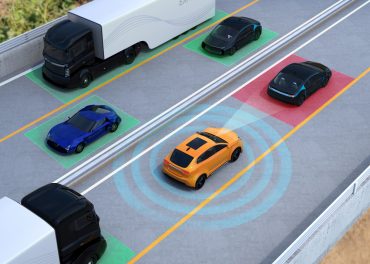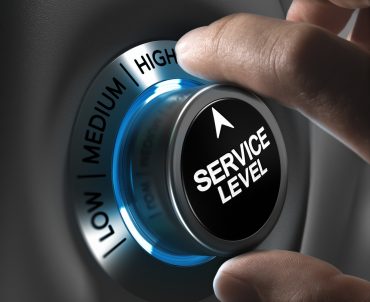
Many IoT projects fail, yet discussion of this new basket of tech continues. Here are our solutions to six of the biggest challenges of launching a project.
The complexity of planning, deploying, and managing IoT solutions is no easy task, and it is something that businesses are trying to address in almost every vertical. Delayed time-to-market, missed revenue opportunities, competitive disadvantages, technology incompatibility, and issues surrounding customer loyalty are just some of the drawbacks that can result when IoT challenges are not proactively addressed. Unfortunately, many organizations do not currently have the internal expertise to do so.
A study from Merrimack College found:
- 80% of organizations lacked IoT skills necessary to ensure solutions work as originally intended.
- 76% of respondents said their organization lacks appropriate senior, strategic-level staff with IoT skills.
- 72% indicated that their organization needed more management-level experience in IoT.
These gaps clearly point to the challenges many businesses face as it relates to IoT lifecycle management. Specifically, there are six primary challenges impeding organizations from taking advantage of the unprecedented benefits of IoT, and with each, there are actionable solutions that can make IoT deployments a more seamless, efficient process.
See also: Most users have an IoT device, but even more have problems with them
Challenge 1: Realizing ROI
Many organizations have difficulty maximizing the ROI of IoT initiatives, which is often related to a lack of a comprehensive strategy and understanding of their readiness for IoT.
The solution: IoT strategy and readiness
This requires deep IoT knowledge, experience, and global reach to help envision and deliver complete IoT management capabilities. Increased return on IoT investments means developing a comprehensive strategy and understanding of organizational readiness to improve business outcomes.
Challenge 2: Managing business applications and accessing data
Businesses are regularly challenged to customize and integrate interdependent single-point solutions. Without the ability to gather actionable, clean, and usable data and insights, they are unable to analyze the efficacy of their IoT deployments and may fail to make the adjustments needed to maximize ROI.
The solution: IoT application management and data as a service (DaaS)
Business and technology application enablement services, supported by a broad IoT ecosystem, are critical capabilities. For example, location-based services (LBS) deliver robust tracking and asset management capabilities. Extracting multiple data elements from internal systems and external access points across the globe help inform insight-driven business decisions. Additionally, advanced visibility into IoT data enables businesses to make predictive decisions that drive project ROI.
Challenge 3: Gaining insight
Most organizations often do not have clear visibility into the actionable, operational analytics, and business intelligence that improves day-to-day decision-making and business performance. The Merrimack College research backs this assertion, finding 46% of global businesses have a deficit of staff with experience in analytics and data science, and 48% did not have the technical support skills to ensure IoT deployments were successful.
The solution: Reporting and analytics
Through integrated IoT systems, businesses can capture and harness data surrounding key business metrics, including network status, asset health, job efficiency, and operator compliance. By understanding data traffic and usage patterns, organizations can proactively assess the value of IoT delivery.
Challenge 4: Managing connectivity and IoT wireless carriers
The complex IoT ecosystem – including a near-endless combination of connectivity services, carriers, device partners, and technologies – makes it problematic for organizations to efficiently and effectively make decisions and advance projects.
The solution: Connectivity and carrier management
There is a clear demand for organizations to seek expertise from those who can offer agnostic, independent recommendations related to acquiring global connectivity coverage and a broad range of technologies, such as cellular, satellite, and LPWA, for mobile data.
Challenge 5: Network and security management
Businesses can frequently lack access to the technology and expert counsel to effectively deploy, then manage, IoT devices and networks at scale. Many organizations fail to take a holistic approach across devices, applications, networks, and data.
The solution: Network and IoT security management
Cloud-based, secure networks, specifically designed for IoT, enable scalability and comprehensive security measures to ensure effective IoT management. Capabilities should include protection at the connectivity and embedded software layers, such as VPN options that extend to cellular connected devices, dynamic routing, and virtualized solutions to ensure data protection. This means better control of IoT networks, devices, and applications to maximize performance and manageability, and ensures enhanced security and protection against data breaches and attacks.
Challenge 6: Understanding of logistical and ongoing management requirements
A thorough understanding of endpoint deployment requirements, ongoing managed services and support, and compliance needs is a recurring challenge to organizations launching IoT solutions. Many organizations may not properly plan for these requirements, impacting operational efficiency and ultimately driving up costs.
The solution: Endpoint lifecycle management and managed services
Businesses can gain improved ROI by reducing the number of partners they currently work with. In doing so, fewer resources need to be allocated to partner management, while receiving more concentrated support through the deployment, operational, and sustainment phases to assist with lifecycle management of their IoT solution and endpoint technologies – from procurement through activation of edge devices, and beyond – to end-of-life disposition service options. This ensures IoT endpoints are maintained, issues are quickly addressed, and advanced exchange and replacement capabilities are in place to protect ROI.
As the complexities – and benefits – of IoT expand, it will be critical for businesses to consider the best strategy to implement the solutions outlined above. Doing so will require taking a very honest look at organizational competencies to determine whether it makes sense to add IoT experts that take on these challenges internally, or expedite the IoT deployment with expert partners.





























